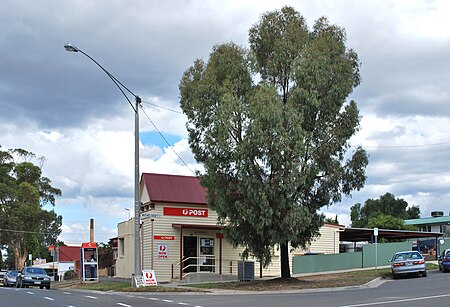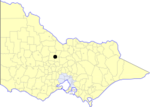North Bendigo
BendigoSuburbs of BendigoUse Australian English from August 2019Victoria (state) geography stubs

North Bendigo is a suburb of the city of Bendigo in central Victoria, Australia. North Bendigo is in the City of Greater Bendigo, 2.4 kilometres (1.5 mi) north of the Bendigo central business district. At the 2011 census, North Bendigo had a population of 3,953.
Excerpt from the Wikipedia article North Bendigo (License: CC BY-SA 3.0, Authors, Images).North Bendigo
Gibson Street, Bendigo North Bendigo (North Bendigo)
Geographical coordinates (GPS) Address Nearby Places Show on map
Geographical coordinates (GPS)
| Latitude | Longitude |
|---|---|
| N -36.733333333333 ° | E 144.26666666667 ° |
Address
Gibson Street
Gibson Street
3550 Bendigo, North Bendigo (North Bendigo)
Victoria, Australia
Open on Google Maps







